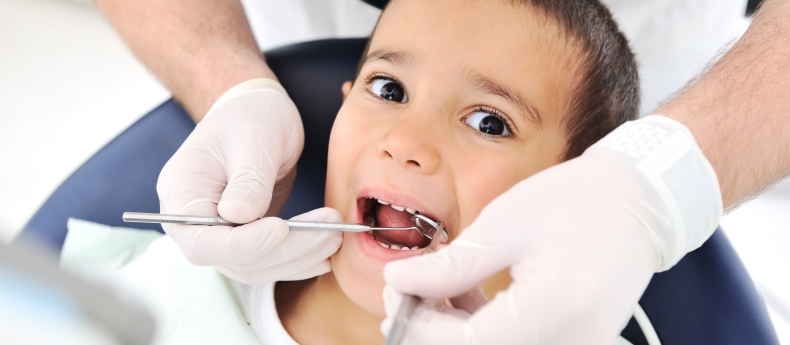
Dental Sedation and Anesthesia
It’s no surprise that many people do not look forward to going to the dentist. Many people—both children and adults—experience mild to severe anxiety based on past experience in a dental chair, some pain or a perceived lack of control. This can especially be a problem with small children visiting the dentist. Fortunately for both children and adults, dentistry using sedation or general anesthesia allows for successful dental treatment without all the stress.
What is sedation dentistry?
Giving pharmacological agents prior to and during a dental appointment to calm and relax a patient is referred to as sedation dentistry. Belonging to a class of drugs called sedatives, these agents work to depress the area of the central nervous system that controls conscious awareness. Sedation eliminates conscious awareness, body movements and any discomfort from the medical procedure, allowing the patient to simply “sleep” through the procedure.
Sedation vs. general anesthesia
Depending on the extent of a patient’s anxiety and the dental work involved, your dentist and anesthesiologist can offer varying degrees of dental sedation. Sedation options include conscious sedation with oral sedatives, nitrous oxide (laughing gas) sedation, or intravenous sedation. Although they provide relief from anxiety about the dental procedure, these methods do not provide pain relief, so normally a local anesthetic is also used. Alternatively, general anesthesia works by making the patient unconscious, which is often the method for procedures such as wisdom tooth extraction. Contrary to medical myth, general anesthesia does not affect brain development.
Although pediatric dentists have special training in helping anxious children feel comfortable and confident, in certain cases general anesthesia is recommended. The American Academy of Pediatric Dentistry, the American Dental Association and the United States Department of Health and Human Services consider general anesthesia to be standard care for children who have special health care needs. For children who have a limited understanding or are extremely uncooperative and require sensitive or technically difficult dental care, general anesthesia is also an accepted standard of care to ensure the good outcome for the child.
It is never advisable to restrain a child for a dental procedure, as this potentially traumatic experience can make future dental visits difficult. As an alternative, anesthesia is a good method to treat these kids in a more comfortable and humane manner. Using general anesthesia, the aim is to restore the child’s oral health in one single visit. It is a good option for kids with decay in multiple teeth as it avoids multiple visits to the dentist. General anesthesia is always administered by a trained anesthesiologist in an appropriately-equipped facility, usually an operating room.
Anesthetics are the drugs that are used to start and maintain unconsciousness and must be administered by licensed anesthesiologists. These doctors are specially trained and are experts at looking after anesthetized patients. The anesthesiologist stays with your child throughout the entire operation and carefully monitors him or her. After the dental procedures are complete, the anesthetic is stopped and your child regains consciousness, similarly to waking up from a deep sleep.
Safety concerns
Although general anesthesia is both safe and effective when administered by a trained professional, there is some risk involved with the procedure and a few common side effects. Your child’s pediatric dentist and anesthesiologist will both perform a physical evaluation to assess the type of sedation suitable for your child. Parents are asked to inform the pediatric dentist of any illnesses the child has prior to the general anesthesia appointments. After the procedure, your child may feel dizzy or sleepy for a few hours. It is also normal for a small amount of blood to be ingested during the operation, and for the child to feel nauseated. Any pain or discomfort should go away after a few hours, and the dentist can help by prescribing painkillers.
Your child will not be discharged until both the dentist and anesthesiologist feel he or she is stable, alert, and ready to go home. The overall procedure will take several hours and your child is typically discharged within a few hours after the procedure. It is recommended for the child to rest and refrain from strenuous activity for one day.
If you or your child is apprehensive about dental care, you should discuss the option of general anesthesia with your dentist.
References:
“Ask Your Dentist About General Anesthesia.” American Academy of Pediatric Dentistry. 2008.
“Calming the Anxious Child.” American Academy of Pediatric Dentistry. 2004.
www.uptodate.com/contents/procedural-sedation-and-analgesia-in-children
Copyright United Family Healthcare 2018 All right reserved ICP 京ICP备13017554号-4



